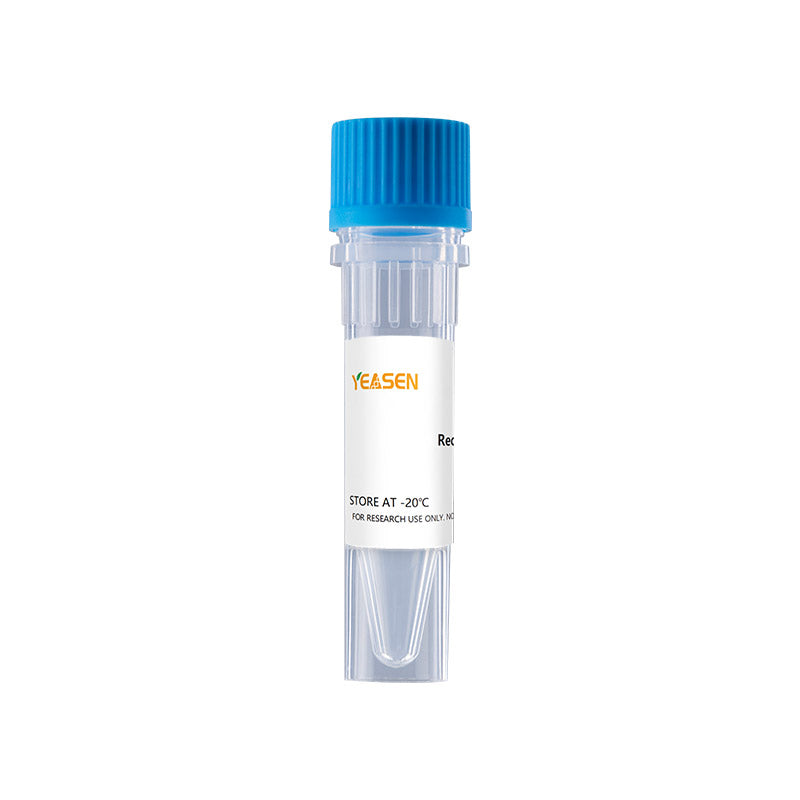Description
S100B is a member of the S100 family of proteins containing two EF-hand-type calcium-binding motifs. S100B exerts both intracellular and extracellular functions. Intracellular S100B acts as a stimulator of cell proliferation and migration and an inhibitor of apoptosis and differentiation, which might have important implications during brain, cartilage and skeletal muscle development and repair, activation of astrocytes in the course of brain damage and neurodegenerative processes, and of cardiomyocyte remodeling after infarction, as well as in melanomagenesis and gliomagenesis. As an extracellular factor, S100B engages RAGE (receptor for advanced glycation end products) in a variety of cell types with different outcomes (i.e. beneficial or detrimental, pro-proliferative or pro-differentiative) depending on the concentration attained by the protein, the cell type and the microenvironment. This calcium binding astrocyte-specific cytokine, presents a marker of astrocytic activation and reflects CNS injury. The excellent sensitivity of S100B has enabled it to confirm the existence of subtle brain injury in patients with mild head trauma, strokes, and after successful resuscitation from cardiopulmonary arrest. Recent findings provide evidence, that S100B may decrease neuronal injury and/or contribute to repair following traumatic brain injury (TBI). Hence, S100B, far from being a negative determinant of outcome, as suggested previously in the human TBI and ischemia literature, is of potential therapeutic value that could improve outcome in patients who sustain various forms of acute brain damage.
Product Properties
|
Synonyms |
NEF Protein, Human; S100 Protein, Human; S100-B Protein, Human; S100beta Protein, Human |
|
Accession |
P04271 |
|
GeneID |
6285 |
|
Source |
E.coli-derived Human S100B protein,Ser2-Glu92 |
|
Molecular Weight |
Approximately 10.6 kDa. |
|
AA Sequence |
SELEKAMVALIDVFHQYSGREGDKHKLKKSELKELINNELSHFLEEIKEQEVVDKVMETLDNDGDGECDFQEFMAFVAMVTTACHEFFEH E |
|
Tag |
None |
|
Physical Appearance |
Sterile Filtered White lyophilized (freeze-dried) powder. |
|
Purity |
> 97 % by SDS-PAGE and HPLC analyses. |
|
Biological Activity |
Measured in a cell proliferation assay using human peripheral blood monocytes. The ED50 for this effect is 1-4 μg/mL. |
|
Endotoxin |
< 1.0 EU per 1μg of the protein by the LAL method. |
|
Formulation |
Lyophilized from a 0.2 mm filtered concentrated solution in PBS, pH 7.4. |
|
Reconstitution |
We recommend that this vial be briefly centrifuged prior to opening to bring the contents to the bottom. Reconstitute in sterile distilled water or aqueous buffer containing 0.1% BSA to a concentration of 0.1-1.0 mg/mL. Stock solutions should be apportioned into working aliquots and stored at ≤ -20°C. Further dilutions should be made in appropriate buffered solutions. |
Shipping and Storage
The products are shipped with ice pack and can be stored at -20℃ to -80℃ for 1 year.
Recommend to aliquot the protein into smaller quantities when first used and avoid repeated freeze-thaw cycles.
Cautions
1. Avoid repeated freeze-thaw cycles.
2. For your safety and health, please wear lab coats and disposable gloves for operation.
3. For research use only!
Payment & Security
Your payment information is processed securely. We do not store credit card details nor have access to your credit card information.
Inquiry
You may also like
FAQ
The product is for research purposes only and is not intended for therapeutic or diagnostic use in humans or animals. Products and content are protected by patents, trademarks, and copyrights owned by Yeasen Biotechnology. Trademark symbols indicate the country of origin, not necessarily registration in all regions.
Certain applications may require additional third-party intellectual property rights.
Yeasen is dedicated to ethical science, believing our research should address critical questions while ensuring safety and ethical standards.

